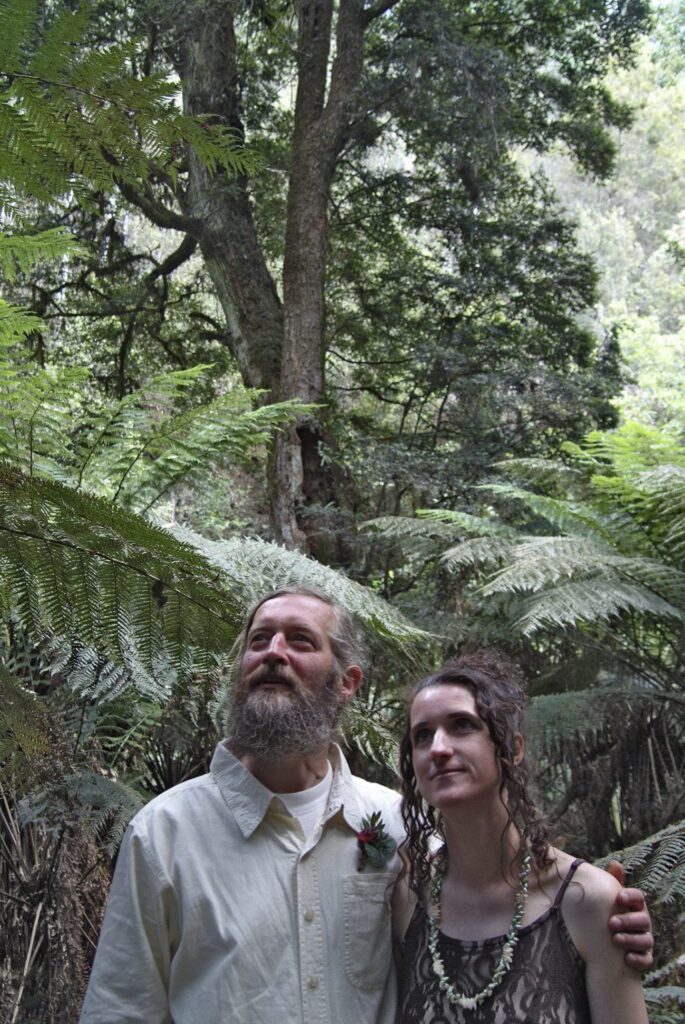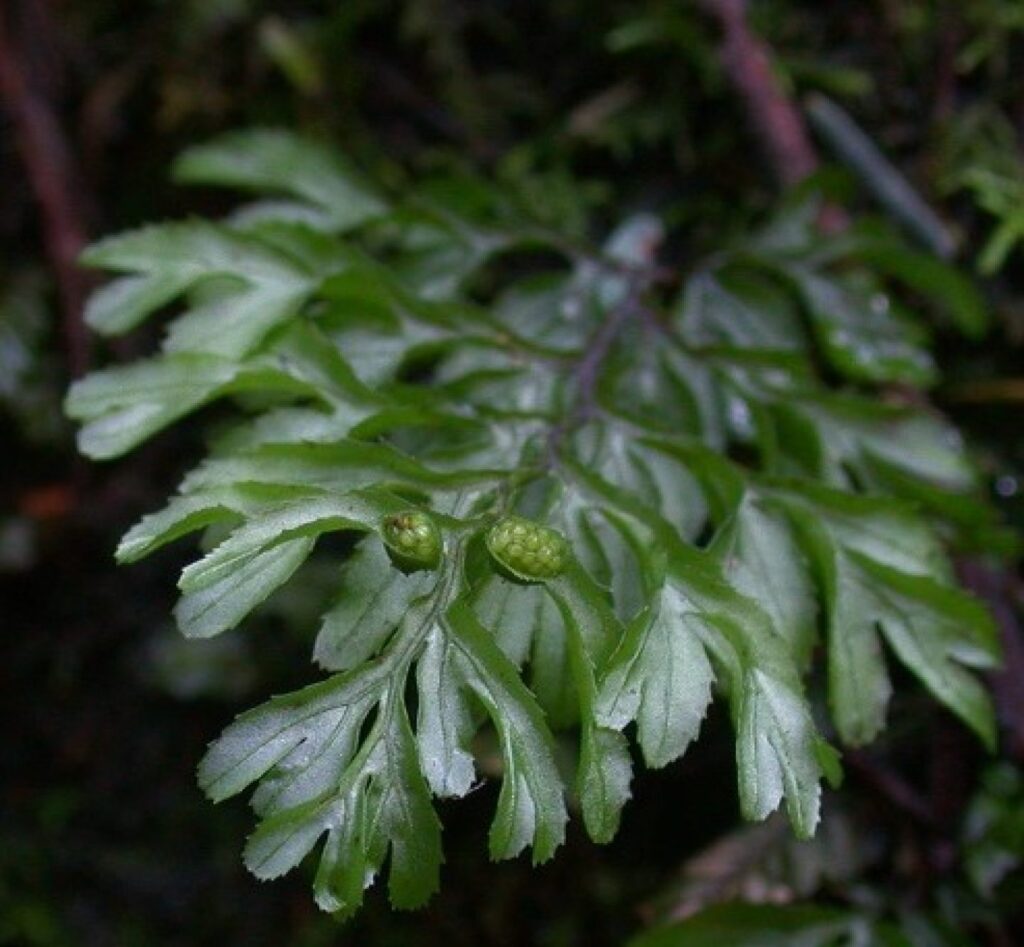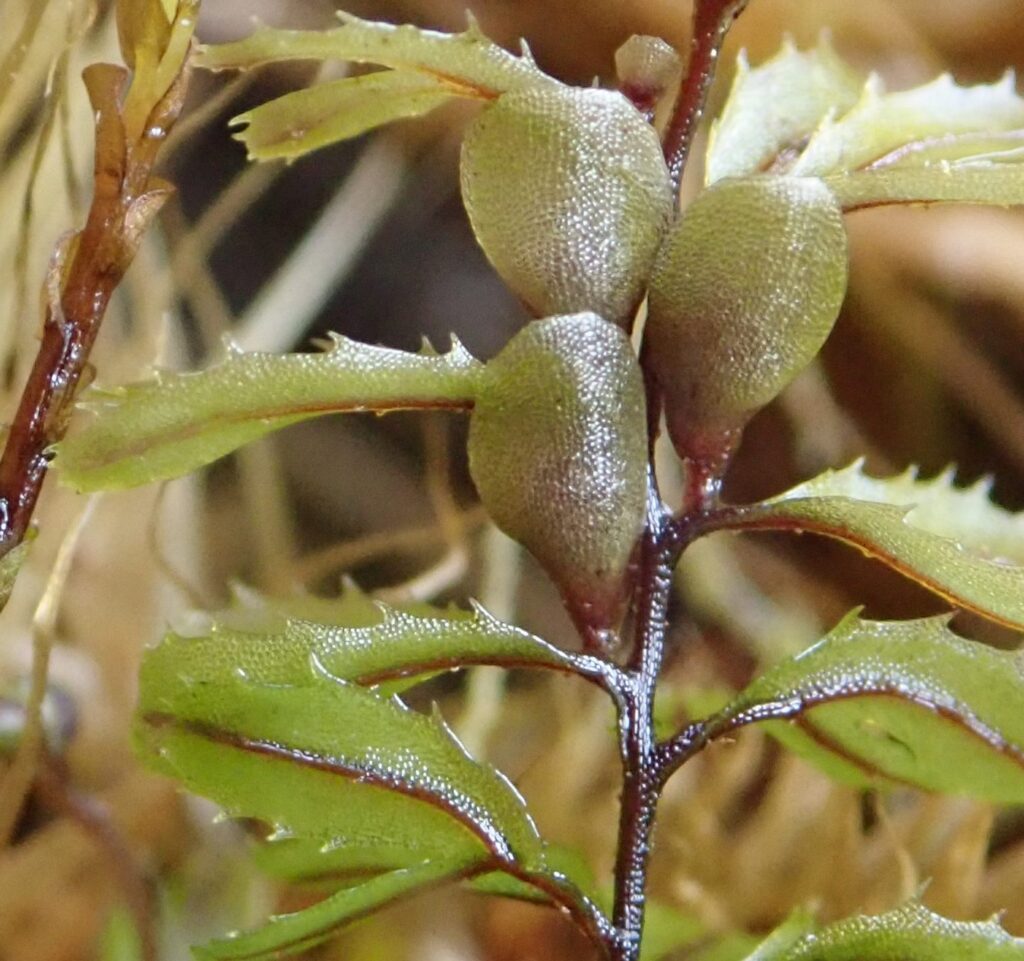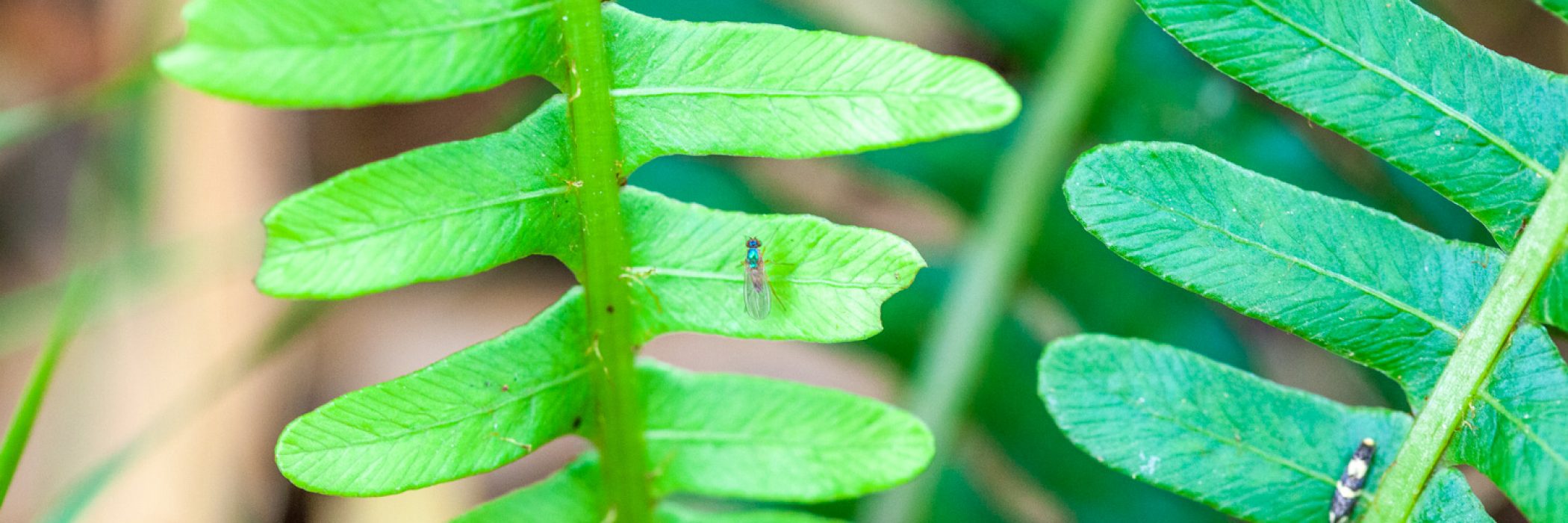Close-up in the ferny forest
Looking at the world through the transparent frond of a filmy fern, I was once again impressed by the intimate knowledge that covenant landholders develop of their land. Erik Bierens has lived in his forest at Golden Valley for over 30 years and doesn’t just know the story of every tree, but has identified the tiniest ferns, and many of the mosses and liverworts too.
In our roles as covenant stewardship officers, Julie Fielder for the south of Tasmania, and I (Anna Povey) for the north, we can help covenant landowners get to know the plants and animals of their land, especially when they are new owners. If you wonder about a plant or animal you’ve found, send us a photo and we’ll do our best to tell you something about it. However, you are the one who knows and cares about your land most, and we love to hear what you have to share with us, whether it’s your favourite place, a story about how the bush has changed over time, or an observation about wildlife behaviour. In this case, Erik helped me to get to know filmy ferns better.
Filmy ferns are those delicate ferns, not much larger than moss, that grow in wet forests on the trunks of tree ferns, rocks and other surfaces. Although small, they can grow in a dense curtain of foliage in constantly damp places, and they are a beautiful part of that verdant softness of shady fern glens. They reward a closer look. Their translucent fronds are usually only one cell thick, so if you hold them up to the light, you can often see through them!

The structure of the leaf is basic, with few veins and no stomata (the pores that vascular plants usually use to breathe while limiting water loss), and although they have rhizomes, they are sometimes rootless; they absorb water over most of the leaf surface instead and there is direct exchange of gases with the air. With no strengthening tissues in their fronds, they are dependent on water pressure to maintain turgidity. All this means that they rely on constantly damp conditions to thrive. Some can withstand a little drying out, with the fronds curling up as they lose water, then recovering when moisture becomes available, but generally you will find filmy ferns in the dark, damp places.
Filmy ferns (family Hymenophyllaceae) are thought to be a primitive family in evolutionary terms, and fossils indicate that the family has existed since at least the upper Triassic; they were around with the dinosaurs.

Tasmania has eight species of filmy fern, Hymenophyllum species, and one bristle fern, Polyphlebium venosum. One endemic, the skeleton filmy-fern, H. applanatum, looks different from the others, being greyish with a covering of stellate hairs and it’s typically found on the trunks of King Billy and Pencil Pines. The others are all transparent green. One of them, H. falklandicum, is found on Macquarie Island.
With such delicate beauty and several species to get to know, filmy ferns always entice me to get out a hand lens (also known as a ‘loupe’; you can buy one for $10-50). Using 10x magnification, you can see features of the sori (which hold the spores) and leaves that will delight you with their tiny perfection. Even more amazingly, you can see the individual cells! The green ‘bubbles’ making up the leaf are actually the cells.

To distinguish species, look for the sori (spore capsules) – they will be small lumps at the edges of the leaf lobes. Most Hymenophyllum species have their sori enclosed by two flaps, called indusia. Polyphlebium venosum, however, has its sori surrounded by a tube, with a bristle sticking out of it (hence ‘bristlefern’). Also look to see if the leaf veins are branched or not, and if the edges of the leaf pinnae (lobes) have tiny teeth or not. One species, H. marginatum, has a black leaf margin. Look at the stipe (stalk) of the leaf – does it have a narrow wing on each side? There is a useful resource on the UTAS web site
Dry forests seem to be my usual hangout, and, despite my best efforts, I seem only to have come across a few species of these wet-forest-loving ferns. It was with Erik that I realised how I have been missing some. He showed me the growth habit of Hymenophyllum peltatum, and how its leaf lobes point forwards, compared with H. cupressiforme whose lobes point both ways. Erik has paid attention to the smaller things so well that he now has a list of 22 species of ferns on his land, including 5-6 species of filmy ferns (he’s waiting for one fern to become fertile before he can confirm it).
While not everyone wants to identify obscure tiny plants to species level like me and Erik, I can guarantee that you will be impressed by a close look at these exquisite ferns. Remind me to bring a hand lens to visit you, so you can enjoy the wonder of seeing individual plant cells while standing in the ferny forest.
This article reproduced from the Running Postman, issue 29, December 2020. Banner image photographed by Andy Townsend.





